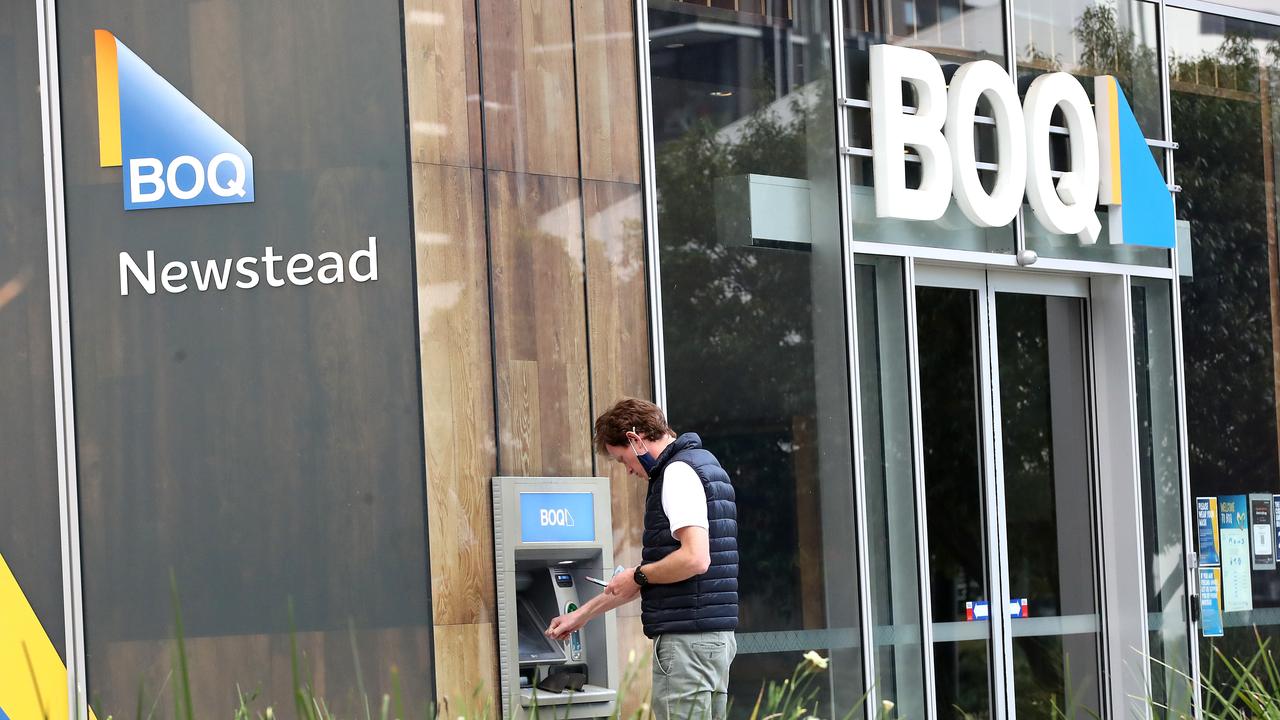The fact Caltex closed at $34.78 a share, above the offer price of $34.50, tells you the market thinks there is more value in the company.
The company is saying nothing on timing but wants to get the decision out of the way ahead of Thursday’s investor day.
The investor day was long ago planned to showcase the new management talent at the company and update on progress.
What happens today depends in part on the reaction of Couche-Tard boss Brian Hannasch.
Shareholders typically want a target to at least go through the motions of engaging with a bidder, especially when the stock is an underperformer like Caltex.
It is a classic case of short-term value today versus the promise of better returns long-term.
In Caltex’s case that’s in the hands of heir apparent Louise Warner, who now runs the Australian operations, and retail boss Joanne Taylor, a former McDonald’s executive.
Caltex is trading ex-boss, with Julian Segal flagging his imminent retirement and a relatively new CFO in Matt Halliday after the retirement of long-term incumbent Simon Hepworth.
Today’s expected decision is simply whether to open the books for due diligence, which is typically strongly supported by shareholders.
The biggest shareholder is AustralianSuper, which speaks for over 6 per cent of the stock and like others is seeking guidance from management on just where it sees value.
The problem with accepting a $34.50 offer to conduct due diligence is it implies Stephen Gregg and the Caltex board would be happy to sell the company at that price.
They wouldn’t.
The reality is Gregg will need some convincing to accept a bid at that level.
He is coming off 12 months in which Caltex has underperformed the market in total shareholder returns by 15 per cent and has already rejected $32 a share.
Couche-Tard is telling everyone there is $3.61 in value in the franking credits which will be unlocked with its offer.
Caltex says the real figure is closer to $1.70.
The debate is important because the value of franking credits is being used by Couche-Tard as a reason it doesn’t need to increase its bid, saying the “real” value is already closer to $36.20 on Caltex numbers.
The market is expecting Caltex to pay a dividend of 50c a share, which will be deducted from the offer price. So instead of being $34.50 it will be $34 plus the dividend you were going to get anyway.
That debate again goes to the bid value and premium on the price before the bid was leaked, $29.79.
This makes the premium a skinny 16 per cent but includes the bounce Caltex enjoyed after unveiling its property float last Monday.
The decision to announce the float, it seems, was prompted by the Couche-Tard offer because Caltex’s Gregg wanted to show shareholders he was looking to increase value.
Having already rejected $32 a share, one assumes Gregg and his Caltex comrades had a fair view of what was value.
The week it has taken since the strategic leak of the bid makes you wonder why the board needs so long to reject the offer on the table.
That said, it is an even-money call which way it jumps from here. It seems Couche-Tard will only have to lift its offer marginally to get in the door.
What happens if and when it gains control to be seen. The Canadians are rejecting any talk of a joint bid with Brookfield, but of course that doesn’t rule out asset sales after the acquisition. Caltex is being advised by Kelvin Barry from UBS and Couche-Tard by Christian Johnson at Goldman.
Big four still in charge
Tyro’s float confirmation today continues a welcome rebound with initial public offerings finally attracting market support.
The float by the bank payments platform provider follows two software floats, management system software provider Damstra and Nitro.
All three were managed in part by Morgan Stanley.
Tyro has been in business since 2003 and last year reported a loss before interest, tax and depreciation of $6.1m on revenue of $189.5m. Its customers numbers for its eftpos terminals now number more than 29,000, up from 23,245.
Founder Jost Stollmann argues: “The disrupter competes head on with the bank.
“The fintech who does front-end innovation is just sustaining the major banks”.
True enough but the reality is bank challengers have come and gone and barely laid a glove on the big four. ANZ is the smallest of the big four on home loans at $246bn, while CBA has $440bn and the big four in total $1.4 trillion.
This compares with the most successful challenger, ING, at $50bn.
The moral is that challenger banks are not yet real challengers.
Swinburne’s Steve Worthington in an article published in ANZ’s Blue Notes compared the British and Australian experience.
Big names like Tesco, Virgin and Metro have come but largely gone in the UK.
Virgin Money was acquired by NAB offshoot CYBG with the intention of moving customers across to the Virgin brand. BoQ owns the Virgin brand in Australia. Retail giant Tesco got up to eight million customers but in May this year waved the white flag and said “challenging market conditions” meant it would withdraw.
Metro Bank opened its door in 2010 and this year admitted it placed a chunk of loans in the wrong risk category and consequently didn’t have enough capital to meet Bank of England rules.
It is now floundering and hoping to be acquired.
Customer data rights, the big competitive tool coming into this market next year, are already established in Britain, making it easier to switch banks.
But they haven’t, and Worthington concludes “banking may have lost trust but people still trust the banks to keep their money safe and like their own bank”.
Banking is a scale game.
Macquarie has $40bn in home loans, HSBC $20bn and ING $50bn.
They are big global names but a light year behind the big four in their core business.
UBS’s John Mott notes brokers are the game changer with bank proprietary mortgage share at 37 per cent, down from 48 per cent in 2013. He suggests some of the big four may become underwriters.
But as impressive as Tryo, ING et al may be, the government-backed oligopoly still rules the game.




The Caltex board is due to decide before the market opens on Tuesday whether to accept the $10bn bid by Canada’s Couche-Tard and the answer will probably be no, unless there is more cash on the table.